There is an error in XML document (8, 20). Inner 1: Unexpected XML declaration. The XML declaration must be the first node in the document, and no white space characters are allowed to appear before it.
OK, I understand this error.
How I get it, however, is what perplexes me.
I create the document with Microsoft's Serialize tool. Then, I turn around and attempt to read it back, again, using Microsoft's Deserialize tool.
I am not in control of writing the XML file in the correct format - that I can see.
Here is the single routine I use to read and write.
private string xmlPath = System.Web.Hosting.HostingEnvironment.MapPath(WebConfigurationManager.AppSettings["DATA_XML"]);
private object objLock = new Object();
public string ErrorMessage { get; set; }
public StoredMsgs Operation(string from, string message, FileAccess access) {
StoredMsgs list = null;
lock (objLock) {
ErrorMessage = null;
try {
if (!File.Exists(xmlPath)) {
var root = new XmlRootAttribute(rootName);
var serializer = new XmlSerializer(typeof(StoredMsgs), root);
if (String.IsNullOrEmpty(message)) {
from = "Code Window";
message = "Created File";
}
var item = new StoredMsg() {
From = from,
Date = DateTime.Now.ToString("s"),
Message = message
};
using (var stream = File.Create(xmlPath)) {
list = new StoredMsgs();
list.Add(item);
serializer.Serialize(stream, list);
}
} else {
var root = new XmlRootAttribute("MessageHistory");
var serializer = new XmlSerializer(typeof(StoredMsgs), root);
var item = new StoredMsg() {
From = from,
Date = DateTime.Now.ToString("s"),
Message = message
};
using (var stream = File.Open(xmlPath, FileMode.Open, FileAccess.ReadWrite)) {
list = (StoredMsgs)serializer.Deserialize(stream);
if ((access == FileAccess.ReadWrite) || (access == FileAccess.Write)) {
list.Add(item);
serializer.Serialize(stream, list);
}
}
}
} catch (Exception error) {
var sb = new StringBuilder();
int index = 0;
sb.AppendLine(String.Format("Top Level Error: <b>{0}</b>", error.Message));
var err = error.InnerException;
while (err != null) {
index++;
sb.AppendLine(String.Format("\tInner {0}: {1}", index, err.Message));
err = err.InnerException;
}
ErrorMessage = sb.ToString();
}
}
return list;
}
Is something wrong with my routine? If Microsoft write the file, it seems to me that it should be able to read it back.
It should be generic enough for anyone to use.
Here is my StoredMsg class:
[Serializable()]
[XmlType("StoredMessage")]
public class StoredMessage {
public StoredMessage() {
}
[XmlElement("From")]
public string From { get; set; }
[XmlElement("Date")]
public string Date { get; set; }
[XmlElement("Message")]
public string Message { get; set; }
}
[Serializable()]
[XmlRoot("MessageHistory")]
public class MessageHistory : List<StoredMessage> {
}
The file it generates doesn't look to me like it has any issues.
I saw the solution here:
Error: The XML declaration must be the first node in the document
But, in that case, it seems someone already had an XML document they wanted to read. They just had to fix it.
I have an XML document created my Microsoft, so it should be read back in by Microsoft.
